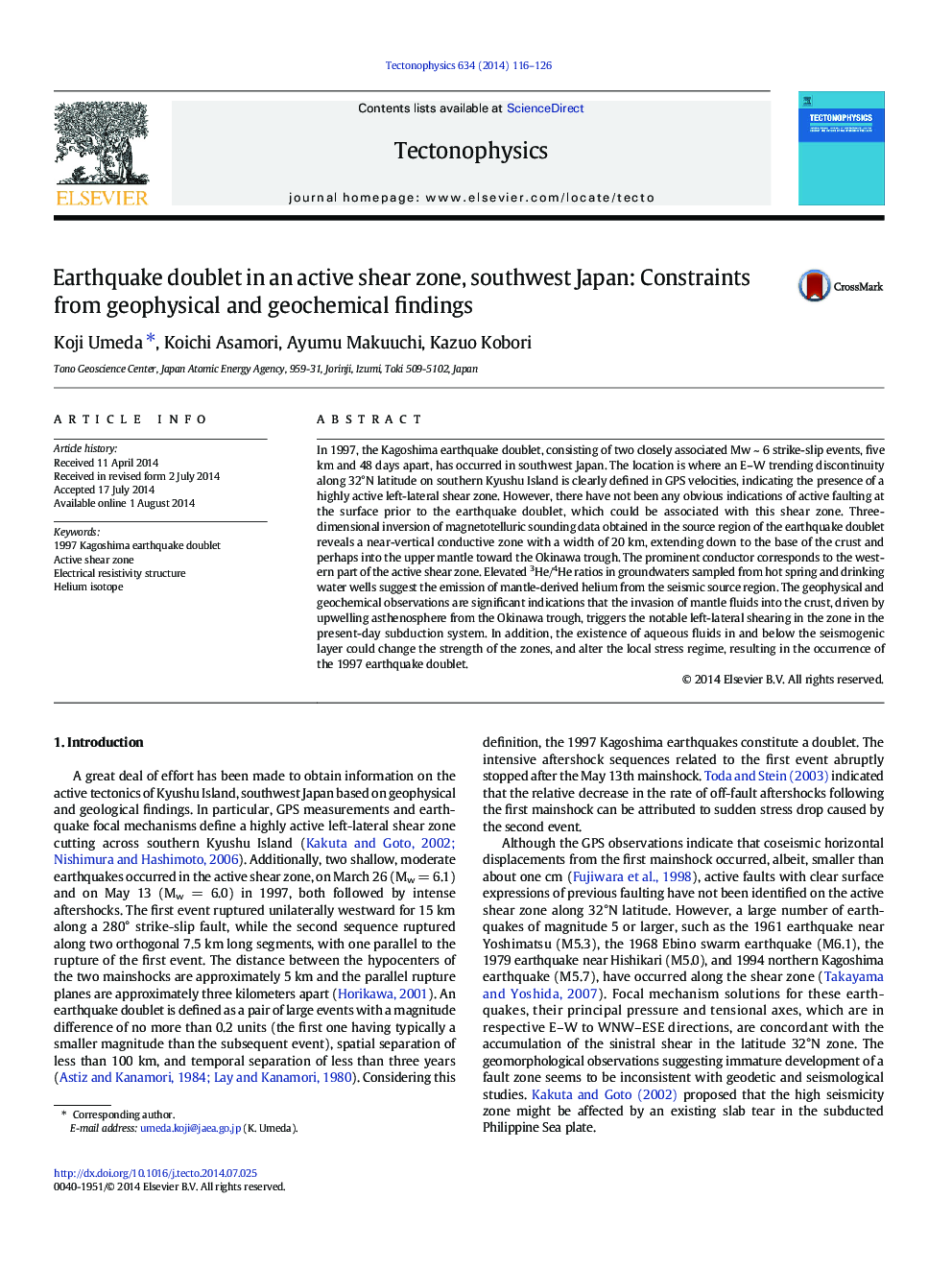| Article ID | Journal | Published Year | Pages | File Type |
|---|---|---|---|---|
| 4691822 | Tectonophysics | 2014 | 11 Pages |
•The 1997 Kagoshima EQ doublet is related to the left-lateral shear strain zone.•The electrical conductors are defined below the source region of the EQ doublet.•The upwelling asthenosphere from the Okinawa trough triggers the notable shearing.
In 1997, the Kagoshima earthquake doublet, consisting of two closely associated Mw ~ 6 strike-slip events, five km and 48 days apart, has occurred in southwest Japan. The location is where an E–W trending discontinuity along 32°N latitude on southern Kyushu Island is clearly defined in GPS velocities, indicating the presence of a highly active left-lateral shear zone. However, there have not been any obvious indications of active faulting at the surface prior to the earthquake doublet, which could be associated with this shear zone. Three-dimensional inversion of magnetotelluric sounding data obtained in the source region of the earthquake doublet reveals a near-vertical conductive zone with a width of 20 km, extending down to the base of the crust and perhaps into the upper mantle toward the Okinawa trough. The prominent conductor corresponds to the western part of the active shear zone. Elevated 3He/4He ratios in groundwaters sampled from hot spring and drinking water wells suggest the emission of mantle-derived helium from the seismic source region. The geophysical and geochemical observations are significant indications that the invasion of mantle fluids into the crust, driven by upwelling asthenosphere from the Okinawa trough, triggers the notable left-lateral shearing in the zone in the present-day subduction system. In addition, the existence of aqueous fluids in and below the seismogenic layer could change the strength of the zones, and alter the local stress regime, resulting in the occurrence of the 1997 earthquake doublet.
